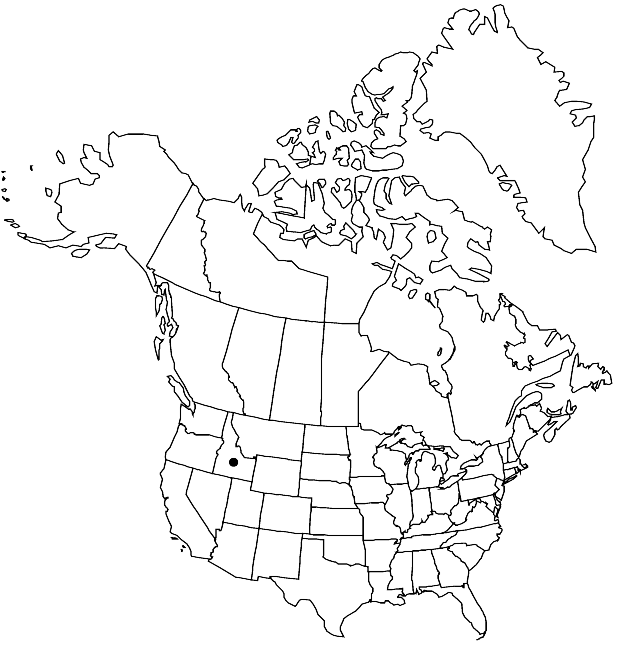Difference between revisions of "Draba argyrea"
Bull. Torrey Bot. Club 30: 251. 1903.
imported>Volume Importer |
imported>Volume Importer |
||
| Line 54: | Line 54: | ||
|publication year=1903 | |publication year=1903 | ||
|special status=Endemic | |special status=Endemic | ||
| − | |source xml=https:// | + | |source xml=https://bitbucket.org/aafc-mbb/fna-data-curation/src/2e0870ddd59836b60bcf96646a41e87ea5a5943a/coarse_grained_fna_xml/V7/V7_370.xml |
|tribe=Brassicaceae tribe Arabideae | |tribe=Brassicaceae tribe Arabideae | ||
|genus=Draba | |genus=Draba | ||
Latest revision as of 22:33, 5 November 2020
Perennials; caudex branched (branches loose, creeping, sometimes terminating in sterile shoots); scapose. Stems unbranched, (0.2–)0.3–0.8(–1.1) dm, pubescent proximally, glabrous distally, trichomes short-stalked to subsessile, 5–8-rayed, 0.05–0.2 mm. Basal leaves rosulate; subsessile; petiole base and margin not ciliate, (midvein obscure abaxially); blade oblanceolate to obovate, 0.3–0.7(–1.2) cm × 1–2.5(–4) mm, margins entire, surfaces canescent with short-stalked, 8–12-rayed, stellate trichomes, 0.1–0.2 mm. Cauline leaves 0. Racemes 2–8(–12)-flowered, ebracteate, elongated in fruit; rachis slightly flexuous, usually glabrous, rarely sparsely pubescent as stem. Fruiting pedicels divaricate-ascending, straight or slightly curved upward, (4–)5–12(–19) mm, glabrous. Flowers: sepals ovate, 2–3 mm, pubescent, (trichomes 4–6-rayed); petals yellow, oblanceolate, 4–6 × 1.5–3 mm; anthers ovate, 0.5–0.6 mm. Fruits lanceolate to elliptic or ovate, plane or slightly twisted, flattened, 5–11 × 2–3.5(–4.5) mm, (symmetric); valves often puberulent, sometimes glabrous, trichomes simple and subsessile, 2–4-rayed, 0.03–0.2 mm; ovules 8–14 per ovary; style (0.7–)1–1.8(–2.4) mm. Seeds oblong, 1.2–1.8 × 0.8–1.1 mm. 2n = 36.
Phenology: Flowering Apr–Jul.
Habitat: Rock crevices, ledges, talus slopes
Elevation: 1000-3100 m
Discussion
M. A. Beilstein and M. D. Windham (2003) hypothesized that Draba argyrea is an allopolyploid derived through hybridization between D. lonchocarpa and D. sphaerocarpa. The species is restricted to Blaine, Boise, Custer, and Elmore counties in central Idaho.
Selected References
None.
